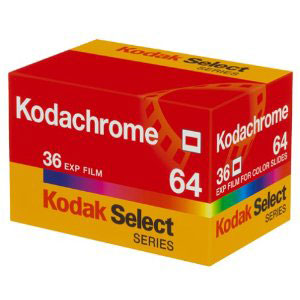The Last Picture Show: Steve McCurry shoots the final roll of Kodachrome (VIDEO)
posted Monday, January 14, 2013 at 3:27 PM EDT

Twenty-one minutes and 33 seconds into the video "National Geographic: The Last Roll of Kodachrome" (embedded below), pro photographer Steve McCurry sums it up for a lot of us. After looking at the slides he shot on the very last roll of Kodachrome film, he says: “I just decided I think I’m going to give up digital photography and go back to shooting Kodachrome.”
Or as Paul Simon sang, "Momma, please don't take my Kodachrome away."
Yeah, if only that could happen.
On the last roll
McCurry is one of the best photographers working, and when he heard that Kodak was stopping production of Kodachrome he asked to get the last roll. Kodak agreed, and McCurry traveled around the globe taking the last 36 exposures. Happily, he has the eye of an artist and his images will send shivers down your spine.
Check out the images he shot and particularly the one at 21.52 of the video, his photo of an old Indian magician. It is classic McCurry; rich in colors that swirl around the subject and powerfully evoke a deeper meaning.
Of course, these beautiful photos are made more poignant by his response to seeing them. While we have all learned to shoot digital, there is something about the textures and tones of Kodachrome that are different -- radically different -- from digital imagery.
Like a lot of photographers, I only shot Kodachrome for color slides. I used Leicas back in the 1960s and '70s, and there was something almost magical about the images I got. The richness of the colors -- particularly the depths of the shadows and the density of the blacks -- was astonishing. It was the most fine-grained film ever, and since its images are recorded on a molecular level in the film's dyes, the sharpness and resolution of detail still surpasses that of today’s best digital sensors.
Even Paul Simon knew it: “Kodachrome it gives you the nice bright colors... of a sunny day.”
Not just digital's fault
But you can’t blame Kodachrome’s demise solely on digital cameras. Long before the digital age, there were problems. One very big issue was processing. Back in the 1970s and '80s, Kodak only had two Kodachrome processing labs in all of America. So you’d shoot your film and drop it off at a local lab that would ship it overnight to one of the Kodak labs, and then you'd get it back late in the next day or the day after. It was a clumsy system that didn’t meet the demands of many professional shooters.
Kodachrome also required extremely accurate processing temperatures (+/- 1/4° F accuracy) that was beyond the ability of most local labs. So Kodak bulked up its Ektachrome product that could be processed in just a few hours locally.
It was also at this moment in time when Fujifilm introduced Provia and Velvia, two exceptional films that could be processed easily by any good lab anywhere in the world. It was a game changer and many pros sadly reserved Kodachrome only for special situations and switched to the Fuji films for the bulk of their work.
Check out McCurry’s adventure with the last roll of Kodachrome below. It is a paean to what we have lost in our rush into the future.
(Via PetaPixel )